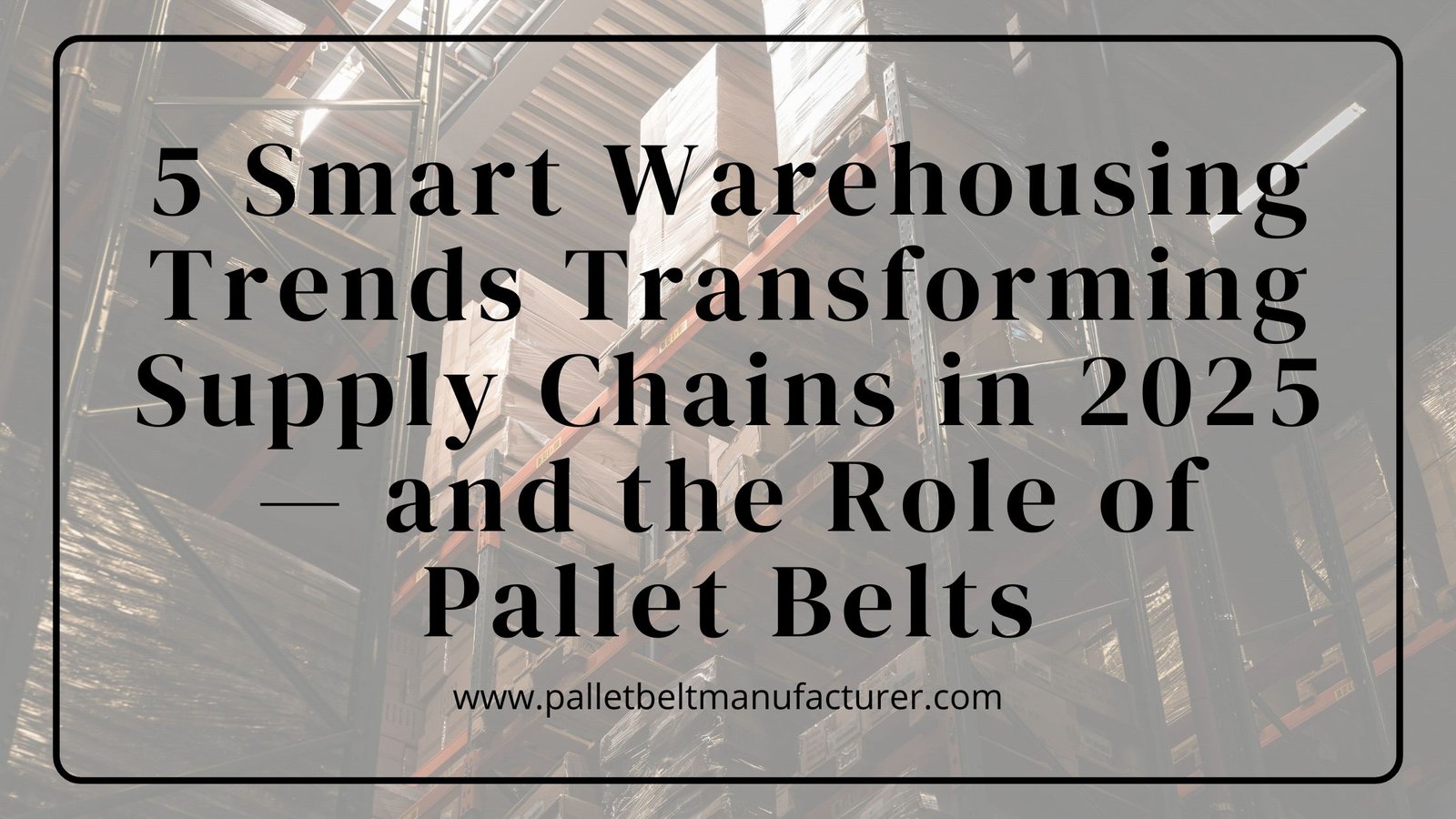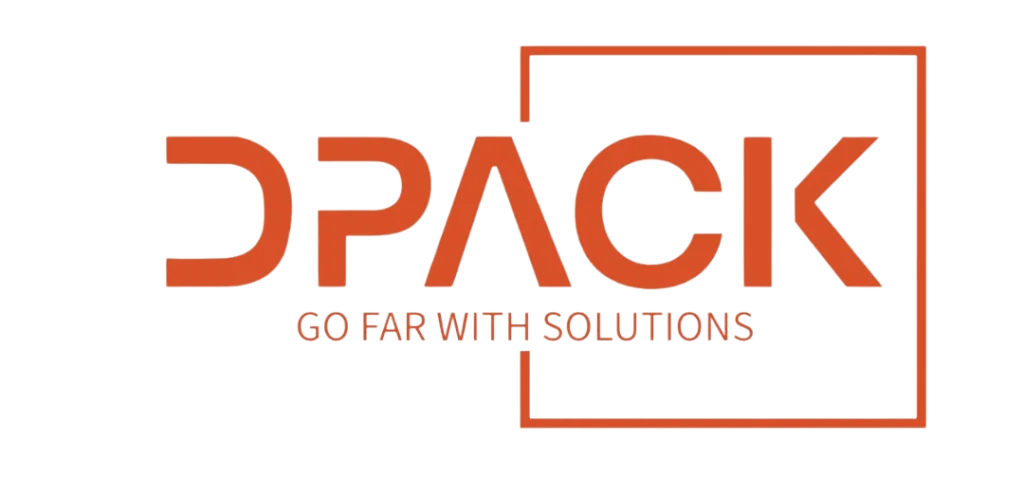
5 Smart Warehousing Trends Transforming Supply Chains in 2025 — and the Role of Pallet Belts
Introduction: Warehouses Meet Intelligence
In today’s logistics landscape, warehouses are no longer just passive storage hubs—they’ve evolved into dynamic, automated, intelligence-rich environments. With Industry 4.0 in full swing, warehouses across the globe are embracing automation, data analytics, and IoT-enabled systems. The pulse of this evolution? Pallet belts—a humble yet critical component that ensures automation functions seamlessly.
At DPack, a pioneering pallet belt manufacturer, we’re witnessing this transformation firsthand. From conveyor belts that communicate with robotic arms to sensor-laden systems that self-diagnose, the new warehousing era is powered by smart belts that do much more than move products—they gather data, enhance safety, and support sustainability.
Let’s dive into the five key trends reshaping warehouses in 2025, and explore how DPack’s innovative pallet belt systems fit into this future-forward ecosystem.
1. Total Automation—Belts as the Coordination Hub
Automation is no longer just robotics or automated guided vehicles (AGVs); it’s about coordinated movement across platforms. In modern fulfillment centers, pallet belts serve as the arteries of the system—transferring pallets between robotic pick stations, sorting zones, packing stations, and dock doors.
Why It Matters:
Businesses demand consistent, high-speed throughput. When AGVs meet a pallet stack on a belt, timing accuracy within milliseconds determines whether operations stall or keep flowing. DPack’s belts are engineered to integrate seamlessly with AMRs and robotic sorters, enabling precision, minimal downtime, and error-free transitions.
Spotlight Example:
A major e-commerce hub in Bangalore recently replaced manual belt systems with DPack’s sensor-synced belt lines. The result? 50% fewer loading mismatches and 40% reduction in manual intervention needed per shift.
2. Data-Driven Warehousing: Belts That Think
Warehousing in 2025 is about data, and pallet belts are becoming data-nodes. Smart belts now come embedded with:
- Weight sensors that detect overloading in real-time
- Vibration and stress monitors that flag wear
- RFID systems that sync with inventory management systems
At DPack, our pallet belts don’t just transport—they record movement and capture health metrics that feed into enterprise dashboards. If a section of belt starts showing abnormal vibration or load pattern, alerts notify operators before breakdowns occur.
What This Enables:
Predictive maintenance, reduced downtime, and precise analytics on throughput—meaning businesses can scale faster and smarter.
3. Green Warehousing with Sustainable Belts
Sustainable warehousing is a trend no brand can ignore. From reducing CO₂ emissions to cutting single-use plastics, businesses are aligning logistics with eco values. Even pallet belts—often made from synthetic materials—are evolving.
DPack leads in producing belts made with:
- Recycled polymer cores
- Low-friction coatings to reduce motor energy
- Quiet noise-emission features
These features save energy and reduce heat generation, resulting in up to 30% lower energy consumption per shift. Smart belts from DPack also support extended life cycles, reducing waste and lowering total cost of ownership.
4. Modular Design and Rapid Reconfiguration
Warehouse layouts are changing faster than ever. Seasonal inventory surges, campaign-driven SKUs, and changing e‑commerce demands necessitate flexible infrastructure. Traditional belts often complicate reconfiguration—but modular smart belts simplify it.
Benefits Include:
- Tool-free assembly and disassembly
- Compatible segment sizes for alternate routes
- Quick re-routing of belt sections without major downtime
Companies like DPack build these systems to support “mobile belt lanes”—conveyor sections that can be physically moved in under an hour, enabling teams to pivot layout and workflow mid-year.
5. Safe Collaboration Between People & Machines
While automation increases, the human touch remains vital. Smart warehouses balance human oversight with machine efficiency, and pallet belts must support this collaboration safely.
DPack belts now feature:
- Low-profile roller exits for safer handoff
- Emergency stop and motion-slow sensors
- Modular speed zones that slow down near human stations
- Anti-slip and ergonomic surface textures
These design elements reduce injuries, improve ergonomics, and help workers trust—and effectively work within—automated systems.
In one Indian FMCG warehouse using DPack belts, injuries at sort stations dropped by 35% after installing safety features, even as throughput increased.
Putting It All Together: A Day in a Smart Warehouse
Imagine this: A forklift drops a pallet at inbound dock, and a pallet belt pulls it to a scanning station. IoT sensors read RFID tags, assess weight, and route the pallet automatically to the next zone. A robot arm picks specific items, and the system updates stock levels in real time. When the shift ends, vibration logs are checked and predictive alerts suggest belt component replacements before morning.
This seamless choreography depends on smart belts guiding every step. Today’s pallet systems are no longer simple conveyors—they are intelligent enablers of smart supply chains.
Conclusion: Why DPack Is Your Industry 4.0 Partner
As a leading pallet belt manufacturer, DPack stands at the intersection of innovation, reliability, and sustainability. Our smart belt systems empower warehouses to:
- Operate with highest efficiency
- Scale with modular infrastructure
- Ensure environmental accountability
- Maintain worker safety amidst automation
If your warehouse upgrade plans include robotics, increased throughput, or digital integration, then your pallet belt choice is strategic—not just mechanical. With DPack, you get more than a conveyor—you get a data-enabled, future-ready logistic partner.
Let’s build the smart warehouse of tomorrow, today.


